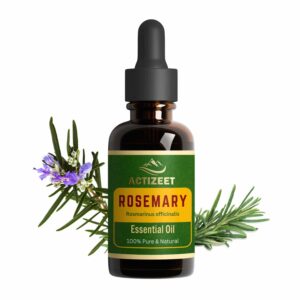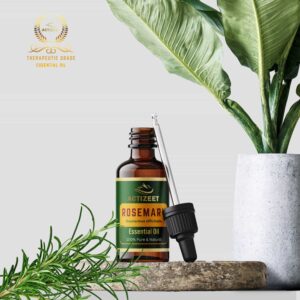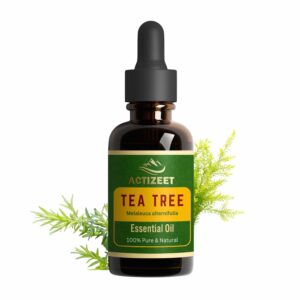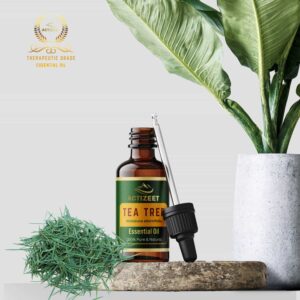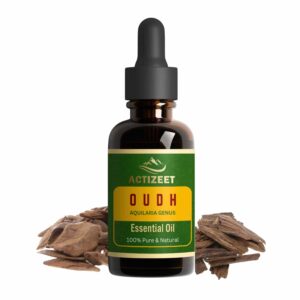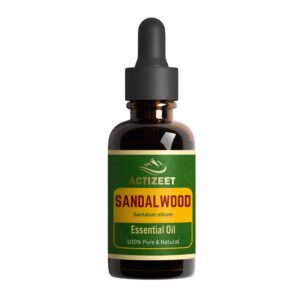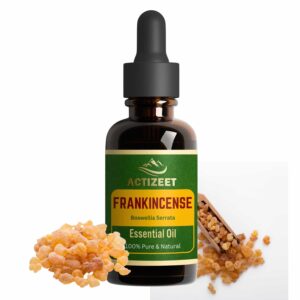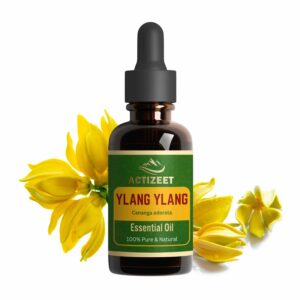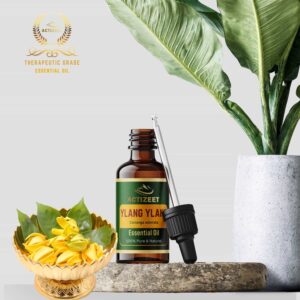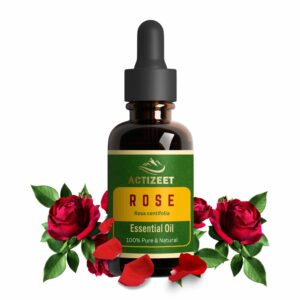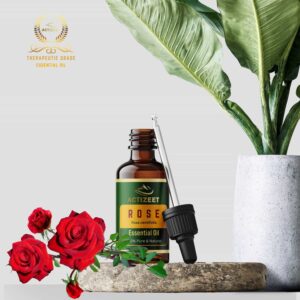Picture this: you walk into a room filled with the delightful scent of lavender, and immediately, you feel a sense of calm wash over you. The power of aromatherapy is undeniable. But what exactly is aromatherapy?
Well, my friend, it’s the practice of using essential oils extracted from plants to enhance physical and mental well-being. These potent oils are derived from various parts of plants, like flowers, leaves, bark, or even roots.
Believe it or not, aromatherapy has been around for centuries! Ancient civilizations like the Egyptians and Greeks harnessed the therapeutic properties of aromatic plants.
They used them in religious ceremonies, medicine, and even cosmetics. The term “aromatherapy” itself was coined by a French chemist named René-Maurice Gattefossé in the early 20th century.
Table of Contents
ToggleImportance of essential oils in aromatherapy
Now that we’ve defined aromatherapy, let’s delve into why essential oils play such a crucial role in this practice. Essential oils are like little concentrated powerhouses packed with volatile compounds that give them their unique scents and therapeutic benefits.
When these aromatic molecules are inhaled or absorbed by the skin, they interact with our body’s chemistry to promote overall well-being. Essential oils have an array of properties ranging from calming and uplifting to antibacterial and anti-inflammatory effects.
They can help reduce stress levels, improve sleep quality, and alleviate headaches or muscle tension—just to name a few! Not only do they affect our physical health, but they also have a profound impact on our emotions and mood.
So you see, dear reader, essential oils are the heart and soul of aromatherapy. Their remarkable properties make them indispensable tools for promoting holistic wellness and creating a blissful ambience.
In the upcoming sections, we will explore more about these magnificent oils, their extraction methods, their scientific basis, and delve into some popular essential oils and how to use them effectively in aromatherapy. So stay tuned as we embark on this fragrant journey together!
Understanding Essential Oils
What are essential oils?
Essential oils are highly concentrated plant extracts that capture the aromatic compounds and medicinal properties of various plants. These oils are derived from different parts of the plant, including leaves, flowers, bark, or even the rinds of fruits.
Each essential oil possesses its own unique scent and therapeutic benefits. They have been used for centuries in traditional medicine and perfumery due to their potent properties.
Extraction methods and sources of essential oils
The process of extracting essential oils is crucial in preserving their therapeutic qualities. There are two primary methods for extracting these precious oils: distillation and cold-press extraction. The Distillation Process:
Distillation is the most common method used to extract essential oils. It involves passing steam through a chamber containing the plant material, which causes the volatile compounds to evaporate.
The steam carrying these aromatic molecules then enters a condenser, where it cools down, causing it to convert back into a liquid form known as hydrosol or floral water. The lighter essential oil separates from this water and is collected separately. Cold-press extraction method:
Cold-press extraction is employed primarily for obtaining citrus-based essential oils. In this method, pressure is exerted on the fruit’s outer peel using mechanical means like pressing or rolling, allowing the oil glands to rupture and release their contents. The resulting oil-rich liquid is then separated from any pulp or juice by centrifugation or filtration processes.
Common plant sources for essential oils
Essential oils can originate from a wide variety of plants, each possessing unique properties that contribute to their specific benefits in aromatherapy.
Lavender: Lavender (Lavandula angustifolia) is one of the most popular essential oils, known for its calming and soothing effects.
It is primarily derived from the flowering tops of the lavender plant.
Peppermint: Peppermint (Mentha piperita) oil has an invigorating scent that is renowned for its ability to relieve headaches and muscle tension.
It is obtained from the leaves and stems of peppermint plants.
Lemon: Lemon (Citrus limon) oil, extracted from the rinds of lemons, emits a refreshing citrus fragrance.
It is often used to promote mental clarity and enhance mood.
Tea Tree: Tea tree (Melaleuca alternifolia) oil possesses powerful antimicrobial properties.
It is derived from the leaves of the tea tree and is commonly used in skincare products for its ability to combat acne and skin infections.
These are just a few examples among many fascinating plant sources that provide us with these precious essential oils, each with its own captivating scents and therapeutic benefits.
The Science Behind Aromatherapy
When it comes to essential oil aromatherapy, there is a fascinating science behind how these oils affect the body and promote well-being. One of the primary ways essential oils work their magic is through inhalation and olfaction. When we inhale aromatic molecules from essential oils, they travel through the nasal passages and interact with olfactory receptors in our nose.
These receptors then send signals to the limbic system, which is responsible for emotions, memory, and behaviour. This direct connection between our sense of smell and emotions explains why certain scents can uplift our mood or evoke memories.
In addition to inhalation, essential oils can also be absorbed through the skin. When applied topically, these potent oils are easily absorbed into the bloodstream, where their therapeutic properties take effect.
The skin acts not only as a barrier but also as a gateway for absorption. The molecular size of essential oil components allows them to penetrate the skin’s outer layers and reach deeper tissues.
Inhalation and Olfaction Process
During inhalation, aromatic compounds from essential oils enter our nose with each breath we take. These compounds stimulate olfactory nerves located within our nasal cavity. These nerves send signals directly to the brain’s limbic system, specifically the amygdala and hippocampus – which are responsible for emotions, memory formation, and stress responses.
When we inhale certain scents, like lavender or citrus oils, they have calming effects on our nervous system by reducing anxiety levels and promoting relaxation. On the other hand, invigorating scents like peppermint or eucalyptus can energize us by increasing alertness and enhancing mental clarity.
Absorption Through the Skin
The skin serves as an excellent medium for absorbing essential oil molecules into our bloodstream. When applied topically, essential oils can penetrate the skin’s outermost layer, called the epidermis, and reach the underlying dermis.
From there, they can enter the bloodstream and be distributed throughout the body. It is important to note that essential oils should not be applied directly to the skin without dilution, as they are highly concentrated.
Carrier oils, such as almond oil or coconut oil, are commonly used to dilute essential oils, ensuring safe application and enhancing absorption. Once absorbed, these oils can exert their therapeutic effects locally or travel through circulation to other areas of the body.
Chemical Components of Essential Oils and Their Therapeutic Properties
Essential oils owe their therapeutic properties to a wide range of chemical components present within them. Each essential oil contains a unique combination of compounds, such as terpenes, phenols, alcohols, esters, and more.
These components determine their aroma and potential health benefits. The antimicrobial properties of many essential oils make them useful in fighting off bacteria, viruses, fungi, and other pathogens that may harm our health.
Additionally, some essential oil constituents possess potent anti-inflammatory properties that can help reduce inflammation in various parts of the body. Furthermore, certain compounds found in essential oils exhibit analgesic effects by providing pain relief when applied topically or inhaled.
Popular Essential Oils and Their Benefits
Lavender oil: Calming effects on the nervous system
Lavender oil, with its gentle floral scent, is renowned for its remarkable ability to soothe the mind and body. When it comes to promoting relaxation and enhancing sleep quality, this essential oil stands out as a natural remedy. The calming properties of lavender oil have been cherished for centuries, making it a popular choice in aromatherapy practices.
Not only does lavender oil induce a sense of tranquillity, but it also aids in improving sleep patterns. Research suggests that inhaling lavender fragrance before bedtime can help reduce insomnia symptoms and promote deep, restful slumber.
This makes it an excellent option for those who struggle with falling asleep or staying asleep throughout the night. What’s more, lavender oil possesses remarkable skin-soothing properties.
It has been widely used to alleviate various skin irritations, such as minor burns, insect bites, and rashes. Its anti-inflammatory effects help reduce redness and swelling while providing a soothing sensation upon application.
Peppermint oil: Invigorating scent with multiple uses
If you’re in need of an energy boost or suffer from headaches and muscle tension, peppermint oil might just be your go-to solution. The invigorating scent of peppermint essential oil is known to awaken the senses and provide a refreshing burst of vitality. When applied topically or inhaled through steam inhalation techniques, peppermint oil has shown promise in relieving tension headaches and migraines.
Its cooling properties offer a soothing sensation on the temples and forehead while stimulating blood flow to ease headache discomfort. Beyond its pain-relieving abilities, peppermint essential oil also aids digestion by easing digestive spasms and reducing bloating.
It has been traditionally used to alleviate symptoms such as indigestion, flatulence (gas), stomach cramps, and nausea. Simply dilute a few drops of peppermint oil in a carrier oil and rub it gently on the abdomen to experience its digestive benefits.
Eucalyptus oil: Respiratory support
Eucalyptus oil, derived from the leaves of the eucalyptus tree, is celebrated for its exceptional respiratory benefits. Commonly used in inhalation therapies and chest rubs, this essential oil has become synonymous with clearing congestion and providing relief from respiratory issues.
When inhaled, eucalyptus oil acts as a natural decongestant, opening up the airways to ease breathing difficulties. It helps to clear mucus and phlegm that build up during coughs, colds, or sinus infections.
Additionally, its anti-inflammatory properties reduce inflammation in the respiratory tract, providing soothing relief. Not only does eucalyptus oil assist with respiratory concerns, but it also supports the immune system.
With its antimicrobial properties, it helps fight against harmful bacteria and viruses that can weaken your body’s defence mechanisms. By boosting immune function, eucalyptus oil aids in warding off common illnesses and promotes overall wellness.
These popular essential oils—lavender for calming effects on the nervous system, peppermint for invigorating uses including headache relief and digestion support, and eucalyptus for respiratory support—serve as powerful tools in harnessing the benefits of aromatherapy. Incorporating them into your daily routine can enhance your well-being while embracing nature’s therapeutic gifts.
Methods of Using Essential Oils in Aromatherapy
Diffusion: Utilizing a diffuser to disperse scents into the air
When it comes to enjoying the therapeutic benefits of essential oils, diffusion is one of the most popular methods. By using a diffuser, you can effortlessly fill your space with delightful aromas that can enhance your mood or promote relaxation.
There are two main types of diffusers: ultrasonic diffusers and nebulizers. Ultrasonic diffusers work by producing vibrations that break down the essential oil and water molecules into fine mist particles.
These particles are then dispersed into the air, creating a gentle and continuous fragrance throughout your room. The added benefit of ultrasonic diffusers is that they also act as humidifiers, adding moisture to the air.
On the other hand, nebulizers are more powerful devices that do not require water. They work by forcing pressurized air through a small tube connected to a glass reservoir containing pure essential oils.
The oils are then released in the form of microdroplets, quickly filling the space with a potent aroma. Nebulizers are ideal for larger areas or when you want to experience the full strength of an essential oil’s therapeutic properties.
Blending different oils for desired effects
One of the greatest advantages of aromatherapy is its versatility in creating custom blends to address specific needs or desires. By combining different essential oils, you can create unique scents that offer a wide range of benefits. To start blending oils, it’s crucial to understand their individual properties and how they interact with each other.
For example, if you’re looking for an uplifting blend to boost your mood during stressful times, combining citrus oils such as bergamot and sweet orange with floral notes like lavender can create a harmonious and invigorating aroma. It’s important to experiment with different oil combinations and ratios to find the perfect blend for your needs.
Keep in mind that some oils have stronger scents than others, so adjusting the proportions accordingly is essential. Whether you’re seeking relaxation, mental clarity, or immune support, the possibilities are endless when it comes to creating personalized blends.
Conclusion
Incorporating essential oils into your daily routine through aromatherapy can be a transformative experience for both your physical and emotional well-being. From diffusion methods like ultrasonic diffusers and nebulizers to the art of blending different oils, there are numerous ways to harness the power of these aromatic extracts. By immersing yourself in delightful scents that have been used for centuries, you can create an atmosphere of tranquillity, invigoration, or focus according to your preferences.
So why not embark on this fragrant journey and unlock the incredible benefits that essential oil aromatherapy has to offer? Let their aromatic embrace envelop you with positivity as you elevate your senses and nurture your soul.
RECOMANDED PRODUCTS
-
Rated 4.72 out of 5
₹1,500.00Original price was: ₹1,500.00.₹1,200.00Current price is: ₹1,200.00. Incl. GST ADD TO CART Buy Now -
Rated 4.88 out of 5
₹1,500.00Original price was: ₹1,500.00.₹1,200.00Current price is: ₹1,200.00. Incl. GST ADD TO CART Buy Now -
Rated 4.63 out of 5
₹1,900.00Original price was: ₹1,900.00.₹1,450.00Current price is: ₹1,450.00. Incl. GST ADD TO CART Buy Now -
Rated 4.74 out of 5
₹1,500.00Original price was: ₹1,500.00.₹1,200.00Current price is: ₹1,200.00. Incl. GST ADD TO CART Buy Now -
Rated 4.72 out of 5
₹2,500.00Original price was: ₹2,500.00.₹1,950.00Current price is: ₹1,950.00. Incl. GST ADD TO CART Buy Now -
Rated 4.88 out of 5
₹1,500.00Original price was: ₹1,500.00.₹1,200.00Current price is: ₹1,200.00. Incl. GST ADD TO CART Buy Now -
Rated 4.80 out of 5
₹1,500.00Original price was: ₹1,500.00.₹1,200.00Current price is: ₹1,200.00. Incl. GST ADD TO CART Buy Now -
Rated 4.88 out of 5
₹1,500.00Original price was: ₹1,500.00.₹1,200.00Current price is: ₹1,200.00. Incl. GST ADD TO CART Buy Now
Related posts:
- Varicose Veins: Discover Essential Oil Benefits
- Revitalize Your Mehndi with Essential Oil: Discover the Benefits!
- Discover Top Essential Oils for Back Pain Relief
- Headache Relief: Discover Effective Essential Oils
- Discover the Remarkable Benefits of Vetiver Essential Oil
- Essential Oil in Humidifier: Aromatic Benefits Explored
- Discover the Best Essential Oil for Hair: Expert Recommendations
- The Healing Power of Clove: Uncovering the Surprising Benefits of Clove Essential Oil


